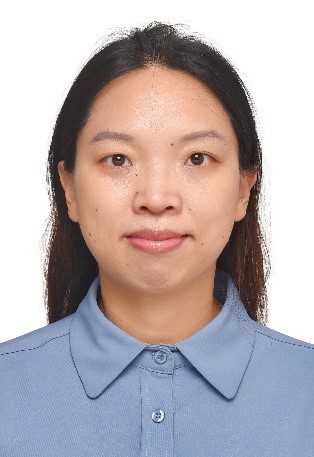劉煥香 Liu Huanxiang
個人簡介
現任職澳門理工大學應用科學學院教授,主要研究領域包括基於人工智能的藥物設計方法學研究,生物大分子結構和功能的分子模擬,基於靶標的藥物設計與發現。在相關領域的權威雜誌如 Cell, Nature Machine Intelligence, Oncogene, Briefings in Bioinformatics, ACS Catalysis, Molecular Pharmaceutics, Chemical Engineering Journal, Journal of Chemical Information and Modeling, Antiviral Research等刊物上已發表 SCI 論文 230餘篇,被引用超過 5,000 餘次,個人 H-index為39。目前主持FDCT項目1項,主持完成國家自然基金4項,省部級及企業橫向課題10餘項。
學習工作經歷
學習經歷:
2001-2005 蘭州大學,博士
1997-2001 青島科技大學,學士
工作經歷:
2021-至今 澳門理工大學,應用科學學院,教授
2008-2021 蘭州大學,藥學院,教授
2007-2008 香港科技大學和北京大學,博士後
2006-2007 義大利Insubria大學,結構與功能生物學系,博士後
研究領域
- 基於人工智能的藥物設計方法學研究
- 生物大分子結構和功能的分子模擬
- 針對重要靶標的藥物發現
研究成果(近三年代表性論文)
- Tian, Y.; Wang, X.; Liu, H.*; Yang,Y. Predicting molecular properties based on the interpretable graph neural network with multistep focus mechanism. Brief Bioinform. 2022, bbac534. https://doi.org/10.1093/bib/bbac534.
- Liu, H.; Zhou, Y.; Song, Y.; Zhang, Q.; Kan, Y.; Tang, X.; Xiao, Q.; Xiang, Q.; Liu, H.*; Luo, Y. *; Bao, R. * Structural and Dynamics Studies of the Spcas9 Variant Provide Insights into the Regulatory Role of the REC1 Domain. ACS Catal. 2022, 12, 8687−8697.
- Yang, Y.; Wu, Z.; Yao, X.; Kang, Y.; Hou, T.; Hsieh, C.Y.; Liu, H.* Exploring Low-Toxicity Chemical Space with Deep Learning for Molecular Generation. J. Chem. Inf. Model. 2022, 62, 13, 3191–3199.
- Zhou, P.; Feng, F.; Song, Y.; Li, J.; Li, Q.; Xu, Z.; Shi, J.; Qin, L.; He, F.; Li, H.; Han, Y.; Zhang, R. *; Liu, H.*; Lan, F. *, Novel RGD-containing peptides exhibited improved abilities to integrin receptor binding and cultures of human induced pluripotent stem cells. Mater. Des. 2022, 219,110762.
- Tan S, Gong X, Liu H*, Yao X*. Virtual Screening and Biological Activity Evaluation of New Potent Inhibitors Targeting LRRK2 Kinase Domain. ACS Chem Neurosci. 2021,12(17):3214-3224.
- Wang, Z.; Pan, H.; Sun, H.; Kang, Y.; Liu, H.; Cao, D.; Hou, T. fastDRH: a webserver to predict and analyze protein-ligand complexes based on molecular docking and MM/PB(GB)SA computation. Brief Bioinform.2022, bbac201. (doi: https://doi.org/10.1093/bib/bbac201)
- Li, Y.; Hsieh, C.Y.; Lu, R.; Gong, X.; Wang, X.; Li, P.; Liu, S.; Tian, Y.; Jiang, D.; Yan, J.; Bai, Q.; Liu, H.; Zhang, S.; Yao, X. An adaptive graph learning method for automated molecular interactions and properties predictions. Nat. Mach. Intell. 2022, 4(7):1-7.
- Zhang, Q.; Zhao, N.; Meng, X.; Yu, F.; Yao, X.; Liu, H.* The prediction of protein–ligand unbinding for modern drug discovery. Expert. Opin. Drug Discov. 2022, 17 (2), 191-205.
- Tan, S.; Zhang, Q.; Wang, J.; Gao, P.; Xie, G.; Liu, H.*; Yao, X., Molecular Modeling Study on the Interaction Mechanism between the LRRK2 G2019S Mutant and Type I Inhibitors by Integrating Molecular Dynamics Simulation, Binding Free Energy Calculations, and Pharmacophore Modeling. ACS Chem Neurosci. 2022, 13 (5), 599-612.
- Han JT, Zhu Y, Pan DB, Xue HX, Wang S., Peng Y, Liu H*, He YX*, Yao X*. Discovery of pentapeptide-inhibitor hits targeting FKBP51 by combining computational modeling and X-ray crystallography. Comput Struct Biotechnol J. 2021, 19:4079-4091.
- An X, Bai Q, Bing Z, Liu H*, Yao X*. Insights into the molecular mechanism of positive cooperativity between partial agonist MK-8666 and full allosteric agonist AP8 of hGPR40 by Gaussian accelerated molecular dynamics (GaMD) simulations. Comput Struct Biotechnol J. 2021, 19:3978-3989.
- Liu H, Li Q, Xiong C, Zhong H, Zhang Q, Liu H*, Yao X. Uncovering the Effect of pS202/pT205/pS208 Triple Phosphorylations on the Conformational Features of the Key Fragment G192-T212 of Tau Protein. ACS Chem Neurosci. 2021, 12(6):1039-1048.
- Wang X, Li Y, Qiu J, Chen G, Liu H, Liao B, Hsieh CY, Yao X. RetroPrime: A Diverse, plausible and Transformer-based method for Single-Step retrosynthesis predictions. Chem. Eng. J., 2021, 420,129845.
- Wang F, Ye W, Wang S, He Y, Zhong H, Wang Y, Zhu Y, Han J, Bing Z, Ji S, Liu H*, Yao X*. Discovery of a new inhibitor targeting PD-L1 for cancer immunotherapy. Neoplasia. 2021 , 23(3):281-293.
- Bai Q, Tan S, Xu T, Liu H, Huang J, Yao X. MolAICal: a soft tool for 3D drug design of protein targets by artificial intelligence and classical algorithm. Brief Bioinform. 2021, 22 :bbaa161. (doi: 10.1093/bib/bbaa161.)
- Zhang Q, Tan S, Xiao T, Liu H, Shah SJA, Liu H*. Probing the Molecular Mechanism of Rifampicin Resistance Caused by the Point Mutation S456L and D441V on Mtb-RNAP through Gaussian Accelerated Molecular Dynamics Simulation. Antimicrob. Agents Chemother. 2020, 64(7), e02476-19.
- Xu Z, Liu H, Wang S, Zhang Q, Yao X, Zhou S, Liu H*. Unraveling the Molecular Mechanism of Prion H2 C-Terminus Misfolding by Metadynamics Simulations. ACS Chem Neurosci. 2020, 11(5):772-782.
- An X, Bai Q, Bing Z, Liu H, Zhang Q, Liu H*, Yao X. Revealing the Positive Binding Cooperativity Mechanism between the Orthosteric and the Allosteric Antagonists of CCR2 by Metadynamics and Gaussian Accelerated Molecular Dynamics Simulations. ACS Chem Neurosci. 2020, 11(4):628-637.
- Zhu, Y; Guo, J; Zhang, A; Li, L; Liu, X; Liu, H*; Yao, XJ. How Graphene Affects the Misfolding of Human Prion Protein: A Combined Experimental and Molecular Dynamics Simulation Study. Environ. Res. 2019, 171:1-10.
- Zhou, S; Zhu, Y; Yao, X; Liu, H*. Carbon Nanoparticles Inhibit the Aggregation of Prion Protein as Revealed by Experiments and Atomistic Simulations. J. Chem. Inf. Model. 2019,59:1909-1918.
- An, X; Lu, S; Song, K; Shen, Q; Huang, M; Yao, X; Liu, H*; Zhang, J*. Are the Apo Proteins Structure Function and bioinformation Suitable for the Rational Discovery of Allosteric Drugs? J. Chem. Inf. Model. 2019, 59:597-604.




